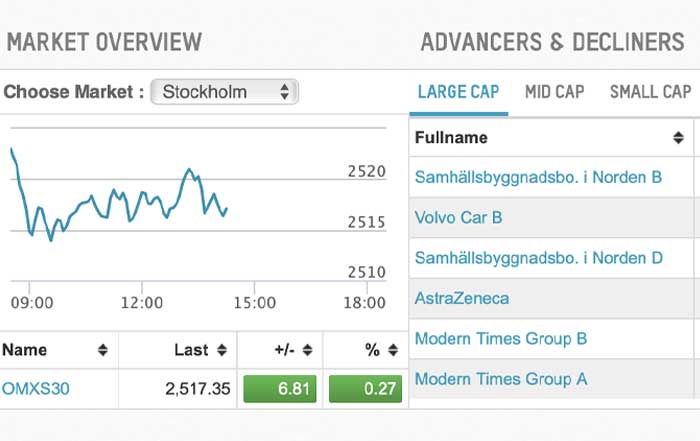In the modern business environment, organizations have increasingly recognized the profound role of corporate team building retreats in shaping workplace culture, enhancing collaboration, and boosting overall performance. In 2025, as companies navigate globalized markets, hybrid work environments, and rapid digital transformation, retreats have emerged as strategic investments rather than optional perks. Businesses now see them as essential opportunities to unite employees across geographies, encourage innovative thinking, and reinforce corporate values.
Well-executed retreats provide much more than relaxation; they foster trust, communication, and resilience within teams. They also allow leadership to align employees with long-term goals, nurture future leaders, and integrate cross-functional collaboration. As organizations face challenges ranging from economic uncertainty to rapid adoption of artificial intelligence, corporate retreats have become a vital platform for ensuring that employees remain engaged and motivated. For bizfactsdaily.com readers, understanding how to strategically plan such retreats is critical, as the success of these events often reflects broader expertise in business management, innovation, and sustainable practices.
Setting Strategic Objectives for a Corporate Retreat
The foundation of every successful retreat begins with clarity of purpose. Companies must define what they aim to achieve—whether it is building stronger interpersonal connections, enhancing leadership skills, encouraging innovation, or reinforcing organizational culture. In 2025, the most effective retreats focus on a balance between professional development and employee well-being.
For example, organizations that integrate leadership training with activities designed to boost emotional intelligence often report stronger retention rates and improved productivity. Meanwhile, companies aiming to adapt to the increasing influence of artificial intelligence in the workplace can design workshops where employees explore how automation complements human creativity. Linking retreat objectives with long-term company strategies ensures that the event delivers measurable outcomes.
More businesses now treat retreats as investments comparable to innovation strategies or marketing campaigns, ensuring alignment with key metrics such as employee satisfaction scores, retention rates, or collaboration across global teams. By integrating performance measures, retreats evolve from casual gatherings into structured business initiatives. Learn more about aligning goals with broader business strategies.
Choosing the Right Destination and Venue
In the past, retreats were often held in secluded resorts or countryside lodges. Today, destination choice reflects both organizational values and logistical practicality. Remote-friendly companies prioritize accessibility for international employees, often selecting hubs such as Singapore, Amsterdam, or Toronto, where strong infrastructure, safety, and sustainability credentials enhance appeal.
Forward-looking organizations also align destination selection with their sustainability commitments. For instance, many European firms now favor eco-friendly retreats in regions like Norway and Denmark, where venues emphasize renewable energy, carbon-neutral catering, and local sourcing. This approach not only reduces environmental impact but also reinforces a company’s commitment to sustainable business practices.
Venues must also be evaluated for technological compatibility, as hybrid retreats often require seamless integration of virtual collaboration tools to include remote employees. Locations that offer high-speed internet, audiovisual infrastructure, and flexible spaces for both workshops and recreational activities are increasingly prioritized.
Designing the Agenda: Balance Between Work and Leisure
An effective retreat agenda strikes a careful balance between structured learning and unstructured social interaction. Executives must ensure that employees leave not only with enhanced skills but also with renewed energy and stronger personal connections.
Work-oriented segments often include keynote sessions from leadership, innovation workshops, and cross-departmental brainstorming sessions. These are frequently tied to long-term business goals such as exploring global investment opportunities or adapting to shifts in stock markets.
Leisure activities, by contrast, build camaraderie and reduce stress. From hiking and cultural excursions to wellness-focused sessions such as yoga or mindfulness, these activities are designed to enhance well-being and improve team dynamics. Companies that incorporate both physical and creative experiences often find employees returning to the workplace more energized and motivated.
To remain relevant in 2025, retreats often integrate sustainability themes or social impact initiatives into their agendas. For example, teams may collaborate on environmental restoration projects, aligning corporate responsibility with meaningful action. This reinforces not only employee engagement but also the organization’s brand reputation.
Corporate Retreat ROI Calculator
Calculate the budget and potential return on investment for your team retreat
Team Building Activities that Drive Real Outcomes
Traditional trust falls and icebreaker games are long gone. In their place, modern corporate retreats embrace immersive activities designed to simulate real-world challenges and enhance problem-solving skills.
Companies in industries driven by technology and innovation often leverage simulation exercises, such as hackathons or scenario planning for future markets. These activities foster creativity while allowing employees to directly contribute to the company’s evolving strategy.
On the other hand, businesses emphasizing cultural integration may design activities around diversity and inclusion, encouraging employees from different geographies to share personal stories, cultural practices, and unique approaches to problem-solving. These not only strengthen relationships but also provide valuable insights into global business trends.
Outdoor activities such as rope courses, sailing, or adventure challenges remain popular, particularly because they test leadership, resilience, and collaboration under pressure. In regions like Canada and New Zealand, retreats often leverage natural landscapes to host eco-adventure activities that combine physical endurance with environmental awareness.
Leadership Development and Mentorship Integration
Retreats offer unique opportunities for leadership development outside the confines of traditional corporate settings. By creating environments where future leaders can be observed, mentored, and coached in real time, companies strengthen their succession pipelines.
Mentorship-focused sessions allow senior leaders to interact with junior employees on a personal level, breaking down hierarchical barriers and encouraging open communication. These informal interactions often reveal hidden talents and future managers who might otherwise go unnoticed in everyday operations.
Companies also integrate sessions on modern leadership topics such as ethical decision-making, resilience in times of uncertainty, and leveraging artificial intelligence for management decision-making. Such programs ensure that leaders remain adaptable and future-ready. For further exploration, review insights on artificial intelligence in corporate strategy.
Budgeting and Cost Optimization for Corporate Retreats
One of the most critical aspects of retreat planning is financial management. In 2025, with economic uncertainties and fluctuating global markets, companies must carefully balance cost-effectiveness with quality experiences. Corporate retreats are often seen as significant expenditures, but when managed effectively, they deliver substantial returns in employee engagement, retention, and performance.
The budgeting process begins with a clear outline of priorities. Companies must decide what matters most—whether it is an inspiring keynote speaker, a unique location, or cutting-edge technology for hybrid collaboration. Establishing these priorities early ensures that resources are allocated to areas with the greatest impact.
Organizations that are particularly cost-conscious often leverage group discounts from hotels, transportation providers, and activity vendors. Many venues offer corporate packages that include accommodation, meals, meeting spaces, and team-building activities, often reducing overall costs compared to booking separately. Additionally, companies with international teams frequently consider holding retreats in regions where the currency exchange rates and local costs provide natural savings, such as Thailand or Portugal, without compromising quality.
Technology has also streamlined budgeting by allowing finance teams to model expenses with precision. Tools now integrate retreat planning with real-time financial dashboards, giving leaders insight into whether retreats align with broader economy strategies. Beyond direct costs, companies also consider indirect factors such as lost productivity during retreat days. However, leading businesses argue that the long-term benefits outweigh the short-term investment.
Logistics and Operational Planning
Executing a corporate retreat requires a detailed understanding of logistics. A seamless experience ensures that employees remain focused on the retreat objectives rather than being distracted by organizational flaws.
Transportation is often a significant factor, particularly for global companies with employees traveling from multiple continents. Many businesses negotiate directly with airlines or use corporate travel partners to secure reduced rates. For regional retreats, chartered buses and trains offer sustainable and cost-efficient alternatives.
Accommodation selection goes beyond comfort. In 2025, venues that demonstrate strong sustainability credentials—such as LEED-certified hotels or resorts powered by renewable energy—align with corporate ESG commitments. In Germany and Sweden, for example, companies increasingly favor eco-lodges and modern conference centers built with sustainable design principles.
Catering is another essential component. Businesses now emphasize locally sourced, healthy, and inclusive meal options that respect dietary restrictions, reinforcing company commitments to employee wellness. Wellness has become particularly central to retreat planning as organizations recognize the link between well-being and long-term employment performance.
Operational details, including scheduling, audio-visual requirements, and contingency planning, must be thoroughly addressed. Companies with hybrid retreats also ensure seamless integration for remote participants by investing in advanced streaming, soundproof spaces, and interactive digital tools.
Technology Integration for Modern Retreats
Retreats in 2025 are no longer purely physical gatherings. Technology integration has transformed the experience, especially as hybrid and remote work models remain dominant.
Organizations often use artificial intelligence-powered platforms to streamline planning. These tools assist in booking venues, managing budgets, personalizing agendas, and even predicting potential issues. AI-driven scheduling systems can optimize retreat timelines by analyzing team preferences and suggesting balanced programs. Learn more about the role of technology in modern corporate management.
During retreats, interactive apps allow employees to access agendas, participate in polls, and provide real-time feedback. These digital tools create transparency, enhance engagement, and give organizers data-driven insights to refine future events.
Virtual reality and augmented reality are also making their way into retreats. Some companies use immersive environments to conduct training simulations, cultural experiences, or collaborative design thinking workshops. For global companies, VR offers a way to bridge distances when physical participation is not possible.
At the end of each retreat, advanced analytics platforms provide comprehensive reports measuring outcomes against set objectives. Metrics may include employee engagement levels, knowledge retention, and post-retreat collaboration patterns. These insights ensure retreats evolve continuously and deliver tangible business value.
Case Studies: Successful Retreats Across Regions
United States: Innovation-Focused Retreats
In the United States, many corporations integrate retreats with their innovation agendas. Tech giants based in California host retreats in off-site innovation hubs, where employees collaborate with startups, universities, and thought leaders. This environment sparks creativity while aligning with the country’s reputation as a leader in innovation.
For example, a Fortune 500 company in the financial services sector organized a retreat in Austin, Texas, blending traditional workshops with live demonstrations of AI-driven financial solutions. The retreat not only enhanced employee knowledge but also generated new ideas for expanding digital services.
Europe: Sustainability-Centered Retreats
European companies often prioritize sustainability and cultural immersion. A global retailer headquartered in France held its annual retreat in Provence, where employees participated in eco-farming activities, learned about renewable energy, and enjoyed regional cuisine. These experiences reinforced the company’s ESG commitments and strengthened team bonds in a relaxed environment.
Meanwhile, organizations in Netherlands and Denmark increasingly integrate urban innovation themes into retreats, exposing employees to smart city models and sustainable urban design. Such initiatives encourage teams to adopt forward-thinking mindsets when returning to the workplace.
Asia-Pacific: Wellness and Growth-Oriented Retreats
In Singapore, retreats often focus on professional development combined with wellness. Companies use the city-state’s global connectivity and world-class infrastructure to gather employees from across Asia. Retreats typically involve strategy workshops complemented by mindfulness practices and cultural tours.
In Thailand, many organizations leverage natural landscapes to design retreats emphasizing physical and mental well-being. Activities such as yoga retreats, eco-adventures, and mindfulness sessions help employees recharge while maintaining a strong focus on long-term business growth.
Africa and South America: Cultural and Social Impact Retreats
In South Africa, corporate retreats frequently combine adventure tourism with community engagement. Employees may participate in wildlife conservation programs or local entrepreneurship initiatives, blending team building with social impact.
In Brazil, retreats often emphasize cultural immersion, music, and arts as ways to foster creativity and collaboration. These retreats highlight the value of celebrating local culture while reinforcing global corporate identity.
Measuring Success and ROI of Corporate Retreats
The effectiveness of a corporate retreat is best measured by tangible results. Businesses in 2025 increasingly track retreat outcomes through both qualitative and quantitative methods.
Employee surveys provide insight into satisfaction, engagement, and perceived value. Follow-up assessments may evaluate whether skills gained during the retreat are applied in day-to-day work. Companies also monitor retention rates, productivity levels, and team performance improvements to calculate long-term returns on investment.
Advanced analytics platforms integrate these metrics with broader HR and performance management systems, ensuring retreats are part of larger workforce strategies. By linking outcomes with measurable business objectives, retreats gain recognition as essential components of corporate planning rather than discretionary expenses.
For organizations committed to future-focused leadership, retreats are no longer optional—they are strategic investments driving stronger workplace cultures and improved performance. Explore how retreats align with broader business innovation strategies.
Emerging Trends in Corporate Retreats for 2025 and Beyond
Corporate retreats are no longer simply about taking employees away from the office to relax; they have evolved into holistic experiences that blend professional growth, cultural awareness, sustainability, and technology. In 2025, several emerging trends are shaping how organizations across the globe design and execute retreats, making them more impactful and aligned with long-term business objectives.
One of the most significant trends is the rise of purpose-driven retreats. These are designed to go beyond team bonding and actively reinforce organizational mission and values. For instance, companies with sustainability at their core often plan retreats around environmental restoration projects such as tree planting, renewable energy workshops, or conservation volunteering. This not only strengthens team unity but also communicates a company’s social responsibility commitments.
Another rising trend is the use of cross-industry collaboration during retreats. Businesses invite guest speakers, startup founders, and innovators from other industries to foster creativity and expose employees to fresh perspectives. For companies looking to stay competitive in a rapidly shifting global economy, these cross-pollination opportunities encourage innovation and prepare teams to adapt to disruptive change.
Wellness-focused retreats are also growing, particularly in regions such as Japan, Finland, and New Zealand, where the emphasis is on mental health and balance. With burnout and stress still widespread in global workforces, organizations recognize that investing in employee well-being directly improves productivity and retention. These retreats often combine mindfulness training, digital detox programs, and structured downtime with leadership workshops, creating a holistic environment where employees can grow professionally while restoring energy.
The Role of Founders and Executives in Retreat Culture
The involvement of founders and senior executives plays a pivotal role in shaping the culture and outcomes of corporate retreats. While retreats provide value at all organizational levels, the visible participation of top leadership adds credibility and demonstrates commitment.
In startups and founder-led organizations, retreats often become opportunities for leaders to articulate their long-term vision, ensuring alignment across the team. These retreats may include fireside chats where founders share personal stories about overcoming challenges, thus reinforcing resilience and entrepreneurial spirit within the team. Such authenticity can have lasting motivational effects, particularly in dynamic industries like technology and crypto.
For larger corporations, retreats offer a rare chance for executives to interact directly with employees in informal settings. This interaction breaks down hierarchical barriers, fosters transparency, and allows leaders to better understand employee concerns. In 2025, leaders are increasingly expected to demonstrate not just financial acumen but also empathy, adaptability, and cultural awareness. Retreats become the perfect backdrop for modeling these qualities.
Executives also play a role in ensuring inclusivity. A retreat designed without input from diverse leadership risks alienating employees from different backgrounds or geographies. By engaging leaders who represent a variety of perspectives, companies can ensure retreats feel relevant and meaningful to all employees. Learn more about how founders influence organizational dynamics.
Sustainability and Corporate Responsibility Integration
Sustainability has moved from being an optional theme to a non-negotiable requirement in corporate retreat planning. Global organizations are now held accountable not just for what they achieve at retreats but also for how they achieve it. Stakeholders, employees, and customers increasingly expect retreats to align with corporate ESG strategies.
Eco-friendly venues, renewable energy-powered facilities, and zero-waste catering are now standard considerations. In Norway and Switzerland, companies commonly host retreats at venues that operate under carbon-neutral standards, sending a strong signal about their environmental commitments. Organizations also design retreat activities around community engagement, such as supporting local artisans, participating in clean-up drives, or collaborating with nonprofits.
Another key element is transparency. Companies now report retreat sustainability metrics alongside traditional financial disclosures. These include data on carbon footprint, waste management, and community contributions. This accountability strengthens credibility and ensures retreats contribute positively to corporate reputations. Businesses that effectively integrate sustainability into retreats also align themselves with global expectations for responsible investment.
Sustainability is not limited to environmental considerations. Social responsibility plays a growing role, with retreats often involving activities that support education, entrepreneurship, or workforce development in local communities. In doing so, companies highlight their broader commitment to shaping a positive global impact.
Practical Checklist for Global Organizations
For multinational corporations, organizing retreats across borders can be daunting. A structured checklist ensures that nothing is overlooked and that the retreat delivers maximum value.
1. Define Objectives ClearlyEstablish measurable outcomes tied to long-term strategy, such as leadership development, innovation generation, or cultural integration.
2. Select Destination StrategicallyChoose locations that balance accessibility, sustainability, and relevance to company goals. For example, an innovation-focused company might select Singapore for its tech ecosystem, while a sustainability-driven firm might opt for Denmark.
3. Budget ResponsiblyAlign financial planning with expected outcomes. Ensure investments are justified by long-term gains in employee engagement, retention, and organizational culture.
4. Design a Balanced AgendaBlend structured sessions like workshops with unstructured time for personal connections. Ensure both in-person and virtual participants are equally engaged.
5. Prioritize InclusivityAccount for cultural differences, accessibility needs, and diverse perspectives in activity design and content delivery.
6. Integrate Sustainability and ResponsibilityMeasure and report sustainability outcomes. Consider eco-certifications, community impact, and responsible sourcing practices.
7. Utilize Technology EffectivelyIncorporate digital collaboration tools, AI-driven scheduling, and post-retreat analytics to measure impact and refine future events.
8. Gather Post-Retreat FeedbackCollect surveys, interviews, and data-driven reports to ensure lessons learned are integrated into everyday business operations.
Following these steps not only guarantees smoother operations but also reinforces the retreat’s strategic value. For businesses navigating a rapidly changing world, corporate retreats are a way to reconnect, realign, and reimagine the future of work.
Looking Ahead: The Future of Corporate Retreats
As organizations continue adapting to hybrid workplaces, economic uncertainty, and the transformative effects of AI, corporate retreats are expected to play an even greater role. The retreats of the future will likely merge physical and virtual experiences seamlessly, creating inclusive environments where employees, regardless of geography, feel equally valued.
Retreats will also become more personalized. With the help of AI-driven employee engagement analytics, companies will design customized experiences that reflect individual preferences, career goals, and learning styles. Imagine a retreat where each employee’s schedule adapts dynamically to maximize participation and growth.
Furthermore, global events such as climate change and geopolitical shifts will shape retreat planning. Companies will increasingly focus on resilience-building, equipping employees not only with professional skills but also with adaptability and global awareness. By aligning retreats with broader corporate strategy, organizations ensure that these gatherings remain not just morale-boosting exercises but powerful tools for long-term success.
Ultimately, corporate retreats in 2025 and beyond symbolize the fusion of business strategy, human connection, and global responsibility. For readers of bizfactsdaily.com, retreats represent a tangible reflection of how business leaders invest in people, culture, and sustainable futures. Learn more about business innovation, employment, and global strategies to understand how these themes continue shaping the corporate world.
Deep-Dive Case Studies: Retreats That Delivered Measurable Business Impact
Corporate retreats in 2025 are no longer symbolic gatherings—they are carefully crafted investments that yield measurable business outcomes. To illustrate this point, it is worth examining case studies of organizations across different sectors and regions that designed retreats with clear objectives and achieved substantial returns.
Case Study 1: A U.S. Technology Giant Aligning Teams Around AI Integration
A leading Silicon Valley technology company hosted a three-day retreat in Lake Tahoe, California, with the primary goal of aligning cross-departmental teams around AI-driven product strategies. The retreat combined keynote sessions from senior executives with AI demonstration labs where employees experimented with prototypes. Recreational activities included mountain hikes and wellness workshops, balancing intense strategy sessions with stress-relief practices.
The company measured post-retreat outcomes through employee surveys and productivity metrics. Results showed a 25% increase in cross-team collaboration, and the retreat directly inspired two new product concepts later introduced to the market. By focusing on artificial intelligence not as a threat but as a collaborator, the company demonstrated thought leadership and successfully rallied employees around future goals.
Case Study 2: A European Retailer Centering on Sustainability and Culture
A multinational retailer headquartered in France organized a retreat in Provence to reinforce its ESG commitments. Employees participated in eco-farming workshops, explored renewable energy solutions, and engaged in team challenges focused on reducing waste in retail supply chains. The retreat was intentionally designed to strengthen the company’s sustainable business culture.
The financial impact was significant. By applying sustainability strategies learned during the retreat, the company reduced packaging costs by 12% over the following year. Employee satisfaction surveys also reported a stronger sense of pride in working for a company aligned with global responsibility.
Case Study 3: Singaporean Fintech Building Global Cohesion
A rising Singapore-based fintech firm hosted a retreat for employees from across Asia-Pacific. The retreat emphasized collaboration in scaling financial services across borders, with breakout sessions focused on adapting to regional regulations in Malaysia, Australia, and Japan.
Activities included cross-cultural storytelling sessions and joint problem-solving exercises simulating international expansion. The retreat helped employees understand not only regulatory frameworks but also cultural nuances in global financial markets. Within six months, the company reported smoother international project execution and faster product rollouts, directly attributing the success to insights gained at the retreat.
Case Study 4: African Telecom Strengthening Local Engagement
In South Africa, a telecom company organized a retreat centered on employee engagement and community service. Employees participated in local school infrastructure projects during the day while evenings were reserved for leadership development workshops.
This unique integration of social responsibility and professional growth elevated employee morale and improved brand reputation in local communities. The company reported stronger customer loyalty in key regions and significantly higher employee retention rates over the subsequent year.
Calculating ROI: From Abstract Benefits to Tangible Metrics
While retreats are often associated with intangible benefits such as morale and creativity, leading organizations now apply rigorous ROI calculations to justify investment.
Direct ROI Metrics
Retention rates: Companies compare attrition before and after retreats, with reductions translating into substantial cost savings in recruitment and training.
Productivity gains: Enhanced collaboration often leads to shorter project cycles, saving time and improving revenue outcomes.
Innovation outcomes: Retreat workshops frequently result in product ideas or process improvements that directly impact profitability.
Indirect ROI Metrics
Employer branding: Retreats contribute to an organization’s reputation as an employer of choice, particularly valuable in competitive job markets like the employment landscape of the United States and Europe.
Customer loyalty: Retreats that emphasize sustainability or community engagement indirectly improve brand image, fostering deeper customer trust.
Cultural resilience: Stronger interpersonal connections reduce workplace conflicts and enhance adaptability during crises.
For example, a mid-sized Canadian financial services company reported that after investing $500,000 in a hybrid retreat, attrition dropped by 15%, saving the company an estimated $2 million in recruitment and training costs within 12 months. By linking retreat outcomes to clear financial indicators, organizations increasingly treat retreats as part of broader investment strategies.
Blueprint for Multinational Corporate Retreats
Organizing retreats across global locations adds complexity, but also provides opportunities for greater impact if approached strategically. Below is a blueprint multinational companies can adopt.
Step 1: Strategic Alignment Across Borders
Ensure retreat objectives are globally relevant yet adaptable to regional needs. For example, while a European team may prioritize sustainability, an Asian team may focus more on regulatory adaptability or digital transformation.
Step 2: Decentralized Planning with Central Oversight
Empower regional offices to manage local logistics while ensuring alignment with global corporate objectives. This balances cultural relevance with unified strategy.
Step 3: Inclusivity in Design
Language barriers, cultural traditions, and dietary requirements must be accounted for. Hybrid formats should ensure remote participants are equally engaged.
Step 4: Technology-Enabled Cohesion
Use collaboration platforms that bridge time zones and geographies. Incorporate AI-driven personalization so participants can create individualized learning paths.
Step 5: Post-Retreat Integration
Global retreats must lead to consistent post-retreat initiatives. Whether through mentorship programs, shared innovation platforms, or sustainability challenges, the retreat’s momentum must continue beyond its conclusion.
By following this blueprint, companies ensure retreats drive global unity without compromising local relevance. Explore more about aligning global business strategies.
Best Practices: Lessons Learned from Leading Companies
Clarity of PurposeRetreats succeed when their goals are clear. Avoid designing retreats as vague “bonding exercises”; instead, link them directly to measurable outcomes such as innovation, retention, or market expansion.
Balance of Structure and FlexibilityOverly rigid agendas stifle creativity, while excessively loose schedules waste resources. The most effective retreats balance structured workshops with free time for informal bonding.
Wellness IntegrationWith employee burnout still prevalent, companies that prioritize wellness—through mindfulness, exercise, and healthy dining—achieve higher employee satisfaction.
Leadership AuthenticityExecutives should actively participate in both formal and informal sessions. Their presence validates the retreat’s importance and humanizes leadership.
Sustainability and ResponsibilitySustainable retreats are now expected rather than optional. Ensure eco-friendly practices and community engagement are embedded in planning.
Feedback and IterationPost-retreat surveys and analytics provide insights to refine future events. Continuous improvement transforms retreats into long-term assets.
Conclusion: Retreats as Strategic Catalysts for the Future of Work
By 2025, corporate team building retreats have become far more than short-term employee perks. They are strategic catalysts that blend professional development, cultural integration, wellness, and sustainability into a single cohesive experience. Businesses across industries and regions now recognize that investing in retreats is equivalent to investing in people—the most valuable resource of all.
For organizations competing in a rapidly changing global economy, retreats provide the necessary space for reflection, alignment, and renewal. They allow companies to reinforce values, strengthen leadership pipelines, and cultivate resilience, ensuring that employees are prepared for the uncertainties ahead.
For readers of bizfactsdaily.com, the lesson is clear: whether leading a startup or a multinational corporation, corporate retreats should not be viewed as discretionary luxuries. Instead, they should be designed as integral components of corporate strategy, delivering both immediate team-building benefits and long-term business impact.








